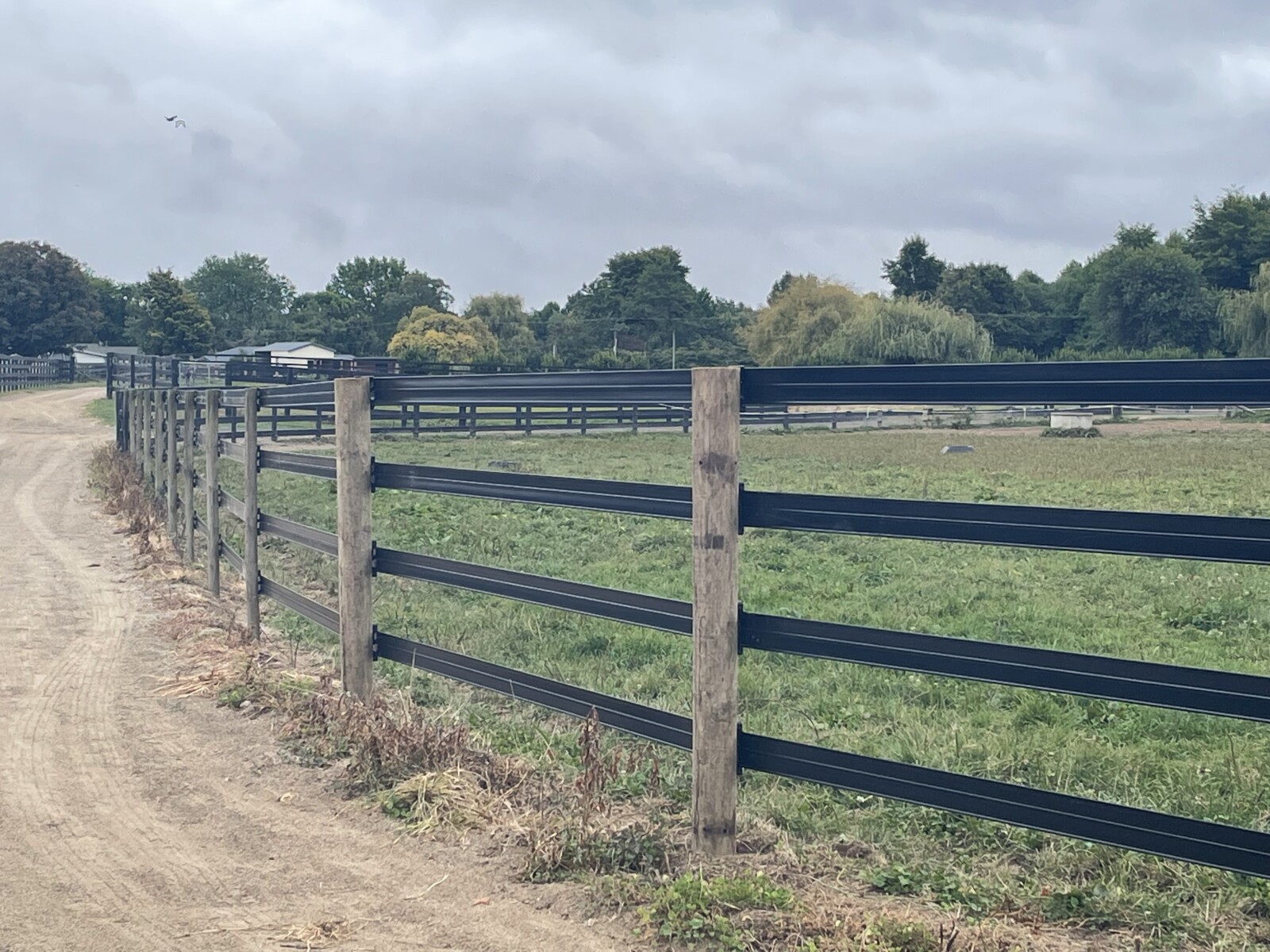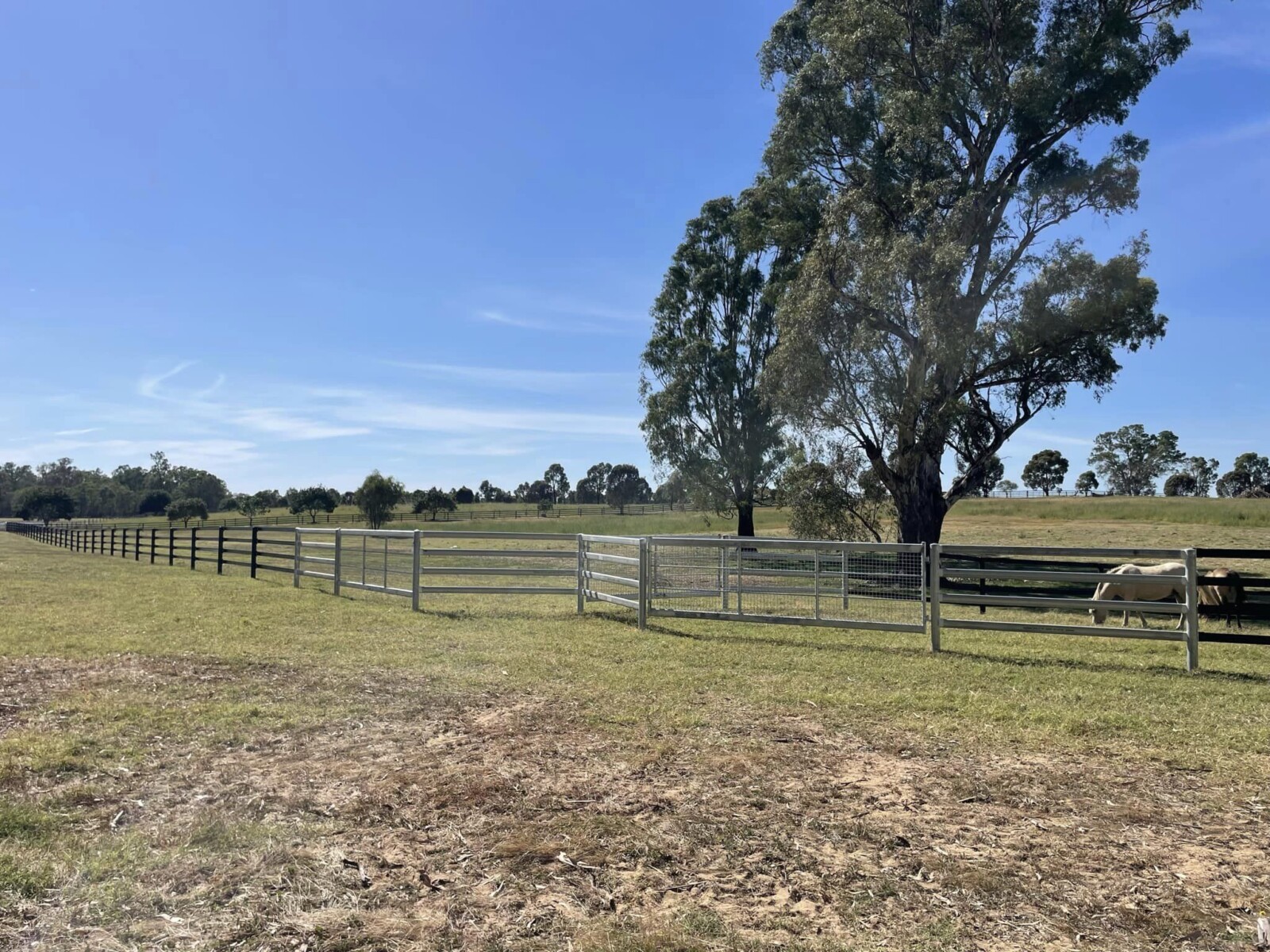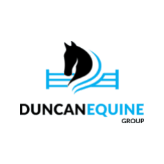Welcome to our comprehensive guide on horse fencing, featuring top advice from seasoned contractors in the field. Whether you’re tackling your own paddocks or planning your next big property project, we’ve got insights that will prove invaluable.
The best tips for DIY fencing
“Duncan Equine’s products are really easy for anyone to DIY, with just a small driver, tech screws, and some common sense,” says Bryan Henry of Bryan Henry Fencing in Waikato, New Zealand. Duncan Equine’s PVC posts and Stallion Rail are known for their lightness and user-friendliness, which makes fencing a manageable task that almost anyone can undertake.
The success of your fencing project depends on the quality of the installation. Make sure your posts are evenly spaced—approximately 4 metres for flexible rails like Stallion Rail, and 5 metres for Shockcoat. Proper spacing is essential for adequate tension and to prevent sagging, and maintain your fence’s integrity and effectiveness over time. Inadequate installation can lead to material failure under stress, regardless of how premium your material is.
The crucial role of end assemblies
All contractors agree on the importance of robust end assemblies. Key factors include:
- Driving posts deep into the ground for stability.
- Boxing or angling posts to enhance strength. “The biggest mistake I see people make is skimping on their end assemblies,” says Scottie Barclay, a professional rider and fencing contractor at Saltarin Lodge Equine Fencing in Victoria, Australia.

Why do our contractors use Duncan Equine?
Scott Barclay praises Duncan Equine for their safety features and customisation options. “Stallion Rail with premium PVC posts offers a flexible, visible, and durable fence, minimising injury risks you see with traditional wire fencing,” he explains. Even for budget-conscious projects, a combination of Stallion Rail or Shockcoat on pine posts ensures a safe fencing solution, adaptable to various budget constraints.
Bryan Henry highlights the challenges of finding quality timber for fencing. With Duncan Equine, he found a reliable, consistent material supply.

Timber vs. Duncan Equine
Duncan Equine’s flexible rail comes electrified, eliminating the need to add standoff wires post-installation. According to Bryan Henry, this makes Duncan’s Stallion Rail and PVC posts more cost-effective per lineal meter than timber options. Timber not only requires more labour due to its weight and complexity but also needs additional painting and electrifying—steps already addressed by Duncan Equine’s products. Moreover, timber fencing often requires twice as many posts, significantly increasing costs.

Choosing the right contractor
Selecting a contractor experienced in horse fencing is critical. A knowledgeable contractor will understand the unique needs of horse fencing, such as avoiding sharp edges, eliminating narrow gaps where a horse might get stuck, and the million and one danger possibilities that only a horse person can see. An experienced horse fencing contractor will not only install the fence properly but will also foresee potential hazards and remove them during the installation process. Scottie says, “All too often, I see the safest materials used without common sense, and I have to correct these mistakes.”
Maintenance and inspection
Regular maintenance is crucial for the longevity of your fence. Periodically check for wear or damage and address these issues promptly. The material choice should also consider local weather conditions, whether you’re in a fire-prone area, dealing with steep terrain, or in a moist climate.
With the right approach and materials, building a strong and safe fence is achievable. If you are keen to DIY or if you want to get an expert horse fencing contractor – Duncan Equine products will have the complete fencing solution to get you there. By following these tips you can create a secure paddock for your horses that will last.Top of Form
All pictures from Saltarin Lodge Equine Fencing and Bryan Henry Fencing




